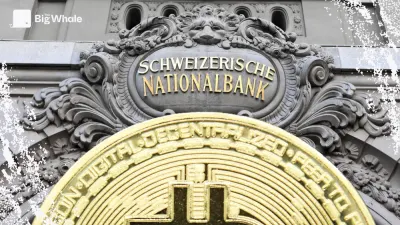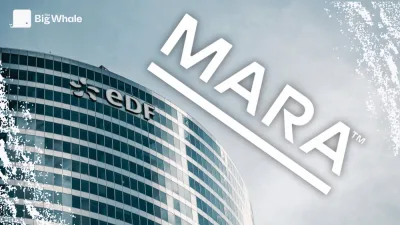TBW - When ICOs rise from the ashes: towards a new era of crypto financing?

The ICO phenomenon
An alternative to traditional venture capital, ICOs have revolutionised the financing of blockchain projects. The principle is simple: these projects can raise funds directly from their community by selling their own cryptocurrency.
Halfway between equity crowdfunding and an IPO, this method of financing has been a runaway success with retail investors. In 2017, the figures are staggering: around 435 ICOs raised more than $5.6 billion, rivalling traditional venture capital activity in the United States.
Flagship projects such as EOS ($4.1 billion), Filecoin ($257 million) and Tezos ($232 million) marked this period with their record-breaking fundraising and are maintaining notable activity today.
However, this craze has been accompanied by numerous fraudulent practices and failures. A year after the ICO frenzy, in December 2018, 86.2% of cryptocurrencies issued were trading below their initial price, and the majority of these projects have since disappeared.
The collapse of Bitcoin in 2017 and SEC lawsuits put an end to this funding method. The sector then split between a regulated institutional framework on the one hand, and more direct decentralised initiatives on the other.
The institutionalisation of crypto project fundraising
Despite the significant losses suffered by investors, this euphoric phase revealed a strong demand from individuals to participate in the financing of young start-ups, particularly during bullish periods.
Crypto funding continues to rely on the community, but the process has evolved considerably, constantly adapting to optimise the experience for all stakeholders.
This process was initially institutionalised, responding to market demand while protecting participants from the excesses seen during the 2017 cycle. This institutionalisation begins in 2019 with the introduction of IEOs (Initial Exchange Offerings) by Binance - notably for BitTorrent's BTT ($7.1 million raised) - then intensifies with the massive arrival of venture capital (VC) funds.
During the 2021-2022 bull run, VCs flock to new blockchain and crypto startups, propelling fundraising to record levels - up to $7 billion in October 2022 alone.
.png)
Although VCs are seen as guarantees of quality and curators of the best opportunities on the market (on paper), they are not, however, a single, ideal solution. There are two main reasons for this: they can make mistakes resulting in significant losses, and their dominant position in funding is not sustainable in the long term.
In 2024, at the start of the current cycle, the market suffered particularly from the weight of these excessive institutional financings whose vesting periods were coming to an end.
The ARB token of Layer 2 Arbitrum is a perfect illustration of the influence of institutional investors on the performance of a cryptocurrency. Although Arbitrum is Ethereum's second largest Layer 2 by locked-in value, its token has significantly underperformed the market since the massive $2.1 billion ARB release in March 2024.

.png)
Other events have shaken investor confidence in VC corners. The Celestia project, among others, allowed venture capital funds to practice staking with their tokens still subject to vesting. These funds could then immediately resell their staking rewards on the market, exerting considerable downward pressure on prices.
In reaction to the disappointing performance of these tokens largely financed by VCs, the crypto community massively turned away from institutional financing. This has led to a return to more direct funding methods: IDOs (Initial DEX Offerings), pre-sales, ICOs masked as airdrops and yield farming.
The pump[.]fun giant and the rise of memecoins are perfect illustrations of this protesting attitude towards tokens subject to strong selling pressure. Memecoins take a diametrically opposed approach to traditional cryptocurrencies, offering tokens that are fully available from launch and a market that is instantly accessible.
While this approach suggests equality between participants, it suffers from two major weaknesses: launches are frequently manipulated, and even with fair distribution, the lack of tokenomics prevents the alignment of interests necessary for sustainable development.
The rebirth of ICOs
Despite their decline after 2018, ICOs could be reborn thanks to the development of innovative new models. In 2025, projects like Echo and Legion manage to combine the best of traditional funding channels with the qualities of on-chain systems.
Echo, founded by trader and business angel "Cobie" (real name Jordan Fish), is a crypto-native platform that allows any investor to create a group and share investment opportunities. Group members can participate in the financing of projects proposed by the group lead, who is incentivised to select good opportunities since he receives a share of the profits made by members.
For its part, Legion is innovating with the concept of ICOs based on trust and reputation: investors are selected for each opportunity according to their reputation score. This score evolves according to criteria such as social capital, on-chain activity and developer score (via Github activity), making it possible to assess the added value and merit of the investor.
>> Read our detailed analysis of Echo and Legion
Above all, these two projects seek to solve the problem of crypto capital formation and startups in general in an innovative way, by combining the quality and security of deal flow of traditional circuits with the composability, efficiency and new mechanisms enabled by blockchain.
Finally, regulation is playing a central role in this renaissance: the rules are clear in Europe and allow access to the entire European market if the prerequisites are met. In the United States, the new pro-crypto administration augurs a more flexible policy towards the industry.
With the resignation of Gary Gensler, the change in leadership at the SEC (Security Exchange Commission) is particularly interesting: until now, ICOs have been considered as sales of financial securities that have to be registered with the SEC, and it is formally forbidden for a project to sell unregistered financial securities to US investors.
Under the administration of incoming SEC chairman Paul Atkins, regulation could be eased and allow projects to offer ICOs to US investors without risking heavy fines, thus benefiting from a much greater flow of capital.



